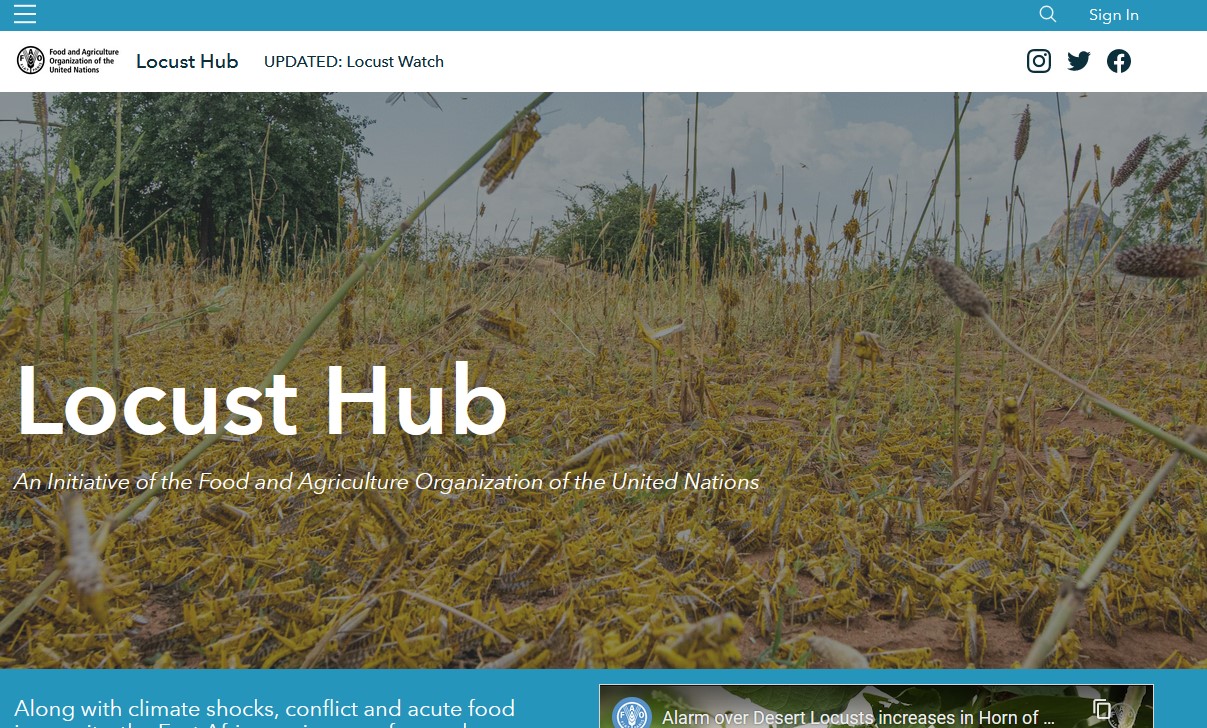Using Geospatial Technologies to Fight Locust Swarms
Food Agriculture Organization of the UN
Locusts plaguing crops have been an ancient problem for societies since the beginnings of agriculture in different parts of the world. In Africa, it can mean the difference between having enough food and famine. Now, locusts are once again threatening crops in East Africa, but this time distinctly modern geospatial technologies can help farmers prevent major disaster.
Geospatial analysis, satellites and locusts
Countries such as Kenya, South Sudan, and Somalia are facing major catastrophe in 2020 from locusts.
The combined effects of COVID-19 and locust swarms can be particularly devastating to vulnerable populations
dependent on locally produced food. Tools created by the Food and Agriculture Organization (FAO) of the United Nations
are helping to monitor and predict where locusts might travel to next before they can harm crops.
This includes eLocust3, which is an mobile phone application that allows georeferenced chat data to be transmitted
to users as a form of group monitoring. Data from compatible tools include eLocust3g, a GPS device that provides reports
on locusts and the stage of development or treatment in specific areas. These tools not only allow the sharing of data
about locusts in given regions but allow a more detailed map and assessment to be made based on the wider spatial
distribution of locust, including if they are migrating and if they are in a stage where they are likely to attack crops.
Other technologies used for surveillance include fixed wing and rotary UAVs. Satellite imagery is also used, which
include systems supported by NASA and the European Space Agency (ESA) such as the Sentinel-2 satellite.
In fact, NASA’s SERVIR team, which helps create environmental policy using satellite imagery, will join efforts in helping
countries in East Africa to develop agricultural policy in light of the evolving situation. Data that could be determined
from satellite systems include vegetation and soil moisture information, as the presence of vegetation growth and moist
soils lead to more rapid and robust locust growth.
Additionally, the FAO updates their risk map for locusts
periodically to reflect the changing situation and new data they receive in large part from satellite and other remote
sensing sources. Researchers are using remote sensing observations of soil moisture and vegetation to map out environmental
conditions conducive to promoting locust swarms. Map of soil conditions in Eastern Africa
(locusts lay eggs in moist soil): NASA, 2020.
